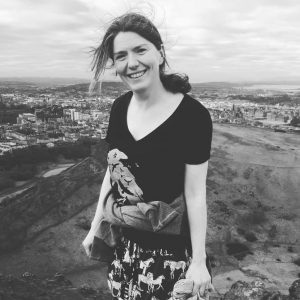 Lockdown may seem frustrating and tiresome to some, but it has made space for a few spontaneous and unexpected collaborations!
Lockdown may seem frustrating and tiresome to some, but it has made space for a few spontaneous and unexpected collaborations!
Over the last month with many “physical” tasks on hold, I have been able to peruse the sections of the Lyell notebooks which were digitised before the introduction of social distancing and the subsequent shut down of the University buildings. And far from being a lonely task – the notebooks have proven to be one of the most social activities I have ever worked on! As it turns out Twitter has a host of geologists, curators, PhD students, as well as academics in subjects ranging from the ideals of Victorian masculinity, to geomorphology… all just waiting to chip in their thoughts on what exactly Charles Lyell was thinking – and its more than likely they are all there because lockdown has disrupted their regular routines.
Now before we start, admittedly there have been some criticism of the notebooks. There is a much more standardised approach to how people “do” notebooks these days, especially in the field: Sketches must have an orientation, a scale bar and some annotation. So there have been a few comments that Sir Charles wouldn’t score very highly if he were an undergraduate summiting his work for assessment.
As a founder of modern geology, it’s important to note how the science has evolved since then, incorporating standards of which Lyell certainly would approve. A very generous statement on twitter from Professor Simon Mudd (@SimonMariusMudd), School of GeoSciences:
“I haven’t spent much time with these notebooks, but from what I have seen this (see sketch below) is the typical quality of the sketches. He was more of a ‘big ideas’ rather than ‘detailed sketches’ type of person.”
Lyell’s oversights in these areas, however, has not been too great an impediment for lively debate, especially when the diagram seems to be a bit of a mystery.
Last week I posted this sketch from notebook 4 on Twitter.

What is it?!? Is it rivers? Oxbow lakes? Waves crashing onto the shore of… Norfolk?
Cue a volley of guesses:
“A Sea-serpent?”
“You are all so wrong, it says “Loch Ness” and here, in the middle, you have Nessy…”
“Was he just bored and doodling??”
So it is true – nothing is sacred to the internet – not even one of the founding fathers of geology’s notebook!
But with the fun came a conclusion: this illustration in Notebook 4 is likely a map of sand banks off the Norfolk coast. Lo and behold, Andy Emery, the geomorphist, produced a map!
And YES – The sketch maybe isn’t as inaccurate as we had initially thought! But how did Lyell know what the submarine landscape off the coast of Norfolk look like in 1827?
There is a good chance that local fisher men would have known about these features, as they are shallower and depending on tides and currents, they might have been the best place to go fishing… or the worst place to run your boat aground.
Another of our online-super-sleuths, Jonny Scafidi (@jonafushi), messaged to say “On p.308 of Principles of Geology he mentions a Captain Hewett, R. N. who, according to p.56 of Memoirs of Hydrography, Volume 1 by Commander L.S. Dawson R.N. undertook a great survey of the N. Sea”. Most of Captain Hewett’s surveys where completed in the 1830’s but there is mention of a survey in 1822 – 5 years before Lyell sketched this diagram in his book. So it is possible Lyell had access to some surveys.
We will never know for certain where Lyell got the information that inspired this sketch. But what we can prove is that social media can be used to explore a whole array of different angles when investigating historical notebooks!
Stay tuned for more exciting installments of #TranscriptionTime over at @CockburnGeol and try your hand at deciphering the thoughts of historical scientists and collectors.
Thanks to the Science twitterati who helped with this mystery between 9.27am and 10.33am on 24th April:
Andy Emery (@AndyDoggerBank) – RA in Energy Transition, School of Earth & Environment, University of Leeds
Jonny Scafidi (@jonafushi) – PhD candidate, School of GeoSciences, University of Edinburgh
Simon Mudd (@SimonMariusMudd) – Professor of Geomorphology, School of GeoSciences, University of Edinburgh
John Faithfull (@FaithfullJohn) – Curator, Hunterian Museum & Art Gallery
Dan Hobley (@Siccar_Point) – Lecturer, School of Earth and Ocean Sciences, Cardiff Univeristy
Rich Taylor (@RockhoundRich) – Geoscience Applications Development at ZEISS Microscopy
Mikael Attal (@mickymicky06s) – Senior lecturer in Geomorphology, School of GeoSciences, University of Edinburgh
Dr. Gillian McCay
Curator, Cockburn Museum
@CockburnGeol
